I’ll Take You There: An Interview With David Hood
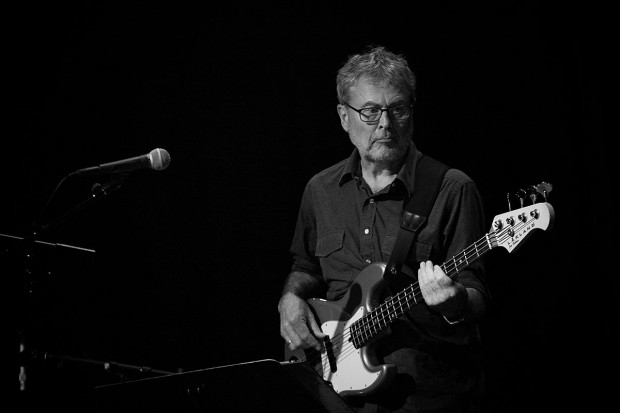
Think about your favorite bass line.
Sing it in your head.
Picture yourself hearing it on the radio… you’re driving in the car and suddenly you hear this groove pulsating from the speakers. At that moment, you bop your head, tap your fingers, and forget about where you’re going. You don’t worry about the work that’s at the office, the chores at home, getting to the bank before it closes, or what you’re making for dinner. All you do is enjoy the music. When I think about some of my favorite bass lines, I realize that many of them originate from the same place. That place is Muscle Shoals and that bass player is David Hood.
If you haven’t heard about the new documentary, simply entitled Muscle Shoals, then you have now. The film references some of the great artists who have recorded there (Aretha Franklin, Wilson Pickett, The Staple Singers, Traffic, Paul Simon), and, like any good music documentary, shines a light on the fantastic studio players who brought the music to life. Upon walking out of the theater, I figured it was time to make a few calls, Google-map the drive time from Nashville to Muscle Shoals, and find out if there was any way to personally discover the source of my favorite soul music.
I finally got the opportunity to meet up with David – a humble, genuine, and soulful man, born and bred in Alabama. After a tour of a few studios, we sat down, discussed some of his musical influences and rapped about the session scene. Here’s what he had to say about having a successful career as a studio player in Muscle Shoals.
David, tell me a little bit about how you became a bass player. What were some of your early influences?
I was a teenager, probably 15 or 16 years old before I ever saw an electric bass and knew that’s what it was. This band, Hollis Dickson and the Keynotes, were playing at a dance at a Naval Reserve training center down by the river. At the back of the room I would hear “doom doom doom doom” but up front, I only saw two guitars. I then noticed that one of the guitars was bigger than the other and had only four tuning keys. That’s my first memory of an electric bass. I bought a guitar at first, began playing with a friend, and realized that he was a much better guitar player than I was. They needed someone to play bass, so I bought a bass… a lot of bass players may tell you the same story. It turned out to be the best thing that ever happened to me.
What kind of music did you listen to when you first started to play?
Jimmy Reed, The Ventures, Bo Diddley, Chuck Berry, Ray Charles; the stuff on the radio and the music that other bands played. I later realized that most of my favorite music was black music; I had an affinity for that style and it was natural for me to play rhythm and blues based music. When you’re a kid, you don’t know what color anybody is and it doesn’t matter; it’s just the music you like best.
How did you start doing sessions at FAME Studios?
My first session was for The Mystics, a band I played in. We hired Rick Hall and his studio, recorded two songs, and one became a radio hit in Alabama and parts of Tennessee and Georgia. It sparked my love for recording and I realized that there was something out there that I wanted to do and that it wasn’t necessarily playing on stage in front of people. It was two or three years later when I got called to play on Percy Sledge’s tune “Warm and Tender Love,” the follow up to “When a Man Loves a Woman.” We cut three or four sides that day, two of them became gold records, and that was the first session I got paid to play bass on. When Rick Hall couldn’t get someone from Memphis or Nashville, he would call me to play, and that started my career.
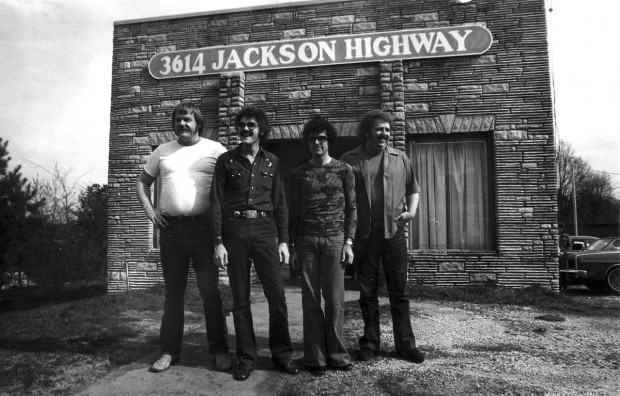
You and the rest of the Muscle Shoals Rhythm Section decided to take a break from FAME and open up your own studio. What inspired that?
My partners, Jimmy Johnson (guitar, sound engineer, and producer), and Roger Hawkins (drums), got into playing and doing sessions before I did. They always thought it’d be fun to have a recording studio. Barry Beckett (keyboards) joined us and [owning a studio] was just sort of a dream; we knew we could only go so far with Rick as a rhythm section for FAME. Then, a recording studio in town became available and the man who built it thought that perhaps we would want to buy the studio. For us it was a convenient time, though it wasn’t for Rick because he needed us more than he let on. We wanted to do better, to make more money playing on hit records, and to share in some of the profits. We were young and eager, so when the studio became available, we thought that it was time to do it. That was 1969.
After we got our studio, we had to think of a name. We thought of Lone Pine Recording and Sheffield sound, and finally, almost as a joke, I said, “Well what about Muscle Shoals Sound?” Everybody laughed and we went home. The next day, we got back together and everyone said, “You know, that’s a good name—Muscle Shoals Sound,” and that’s how it got the name. The reason it’s funny is because it’s in Sheffield and not Muscle Shoals… the whole area is considered the Muscle Shoals area, but really, Muscle Shoals is one place, Sheffield is another, and Florence is another. We were in Sheffield but named out studio “Muscle Shoals Sound.” It was a little way to say, “see there, Rick.”
What do you think the attraction was for people to come down and record at Muscle Shoals?
I think everybody came because they heard something that we had already done. If it was a hit record, and everyone wants a hit record, they would come for that. If they liked a sound, they would come for that sound. Paul Simon heard “I’ll Take You There” by the Staple Singers and called Al Bell at Stax Records wanting the same band. Paul had worked in Jamaica on his previous solo record, “Mother and Child Reunion,” and he thought that the players [on “I’ll Take You There”] were black guys from Jamaica. Al told him that we were actually pale looking guys, but that didn’t deter Paul. He booked four days to cut one song, “Take Me To The Mardi Gras,” on There Goes Rhymin’ Simon, and we got the track on the second take. That just blew him away because he was a perfectionist and would take months to record. So, when he saw that he booked and paid for the studio time, he might as well record something else; that opened the door for more songs such as “Kodachrome.”
People also came because they knew we were fast… we’d come in, learn things quickly, and get it good enough to record on the first or second take.
Do you think you became better at doing that? Being able to go in and cut something on the first take?
We weren’t born knowing how to do that, but working with each other over time, we became able to do that. Barry, the keyboard player we worked with, made great chord charts and we were good at reading them. While Barry would make a chart, we would listen to the demo, so when it was time to cut, we had it. When people come to record, they’re paying by the hour for studio time, for the engineer, and the musicians, so they want to get it quickly. That appealed to a lot of people and the more we did it, the better we got at it.
So many of the great soul tunes have a unique bass line or a very definitive groove. How did you approach coming up with some of that?
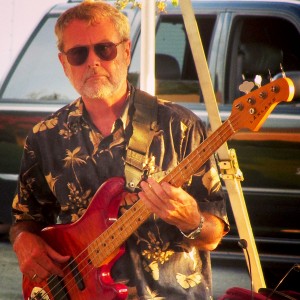 On “I’ll Take You There,” we had been on the road with Traffic, an English group that was on Island Records. Chris Blackwell founded the label and got his start by taking Jamaican artists to England and selling records there. Before the Traffic shows, they played Jamaican artists over the PA system… they played the first Bob Marley stuff before anyone knew who he was. Roger and I were attracted to that sound because it was bass and drum heavy and it kind’ve locked into our mind. When the Staple Singers came to record, the producer Al Bell brought us an instrumental that he heard by the Jamaican band, Harry J and the All Stars, which had the same two-chord progression as “I’ll Take You There.” Al said “I want something like this, but I’m gonna make it into a song.” So we just worked it out, tried a couple of different things, and ended up with what you hear. And that little solo thing—I knew I had 8 bars and those chord changes, so we just did a little melodic thing. We all worked together on it and it was a group effort. Barry, on piano, is playing the bass line while I’m playing the solo. It was all planned out but done quickly enough that you could almost consider it a jam. On that album, Be Altitude, there’s another song, “Respect Yourself,” and that’s got a little bass solo in it too. It’s just a few bars in the beginning and the middle, but they’re just melodic hooks. We were just trying to make pop music.
On “I’ll Take You There,” we had been on the road with Traffic, an English group that was on Island Records. Chris Blackwell founded the label and got his start by taking Jamaican artists to England and selling records there. Before the Traffic shows, they played Jamaican artists over the PA system… they played the first Bob Marley stuff before anyone knew who he was. Roger and I were attracted to that sound because it was bass and drum heavy and it kind’ve locked into our mind. When the Staple Singers came to record, the producer Al Bell brought us an instrumental that he heard by the Jamaican band, Harry J and the All Stars, which had the same two-chord progression as “I’ll Take You There.” Al said “I want something like this, but I’m gonna make it into a song.” So we just worked it out, tried a couple of different things, and ended up with what you hear. And that little solo thing—I knew I had 8 bars and those chord changes, so we just did a little melodic thing. We all worked together on it and it was a group effort. Barry, on piano, is playing the bass line while I’m playing the solo. It was all planned out but done quickly enough that you could almost consider it a jam. On that album, Be Altitude, there’s another song, “Respect Yourself,” and that’s got a little bass solo in it too. It’s just a few bars in the beginning and the middle, but they’re just melodic hooks. We were just trying to make pop music.
How did your relationship with the other players make for a comfortable and creative vibe in the studio? How important do you think that is when you walk into a session?
It’s very important that you feel comfortable working with people you have mutual respect for. None of us are virtuoso players… I can’t do all of the fancy runs or arpeggios and nobody else could either. But, we would always try to make the best music we could for the artist we were backing up. We had similar goals, wanted to make really good music, and would rise and be better together than we were separately. We would surprise each other because, right from the start, we played many styles of music behind different artists and could adapt fairly effortlessly. What might work for a rhythm and blues singer, like Wilson Pickett, wouldn’t be the same thing to work for Paul Simon or an English rock guy.
If we were trying to get a feel right on a tune, my partner Roger, would say “Come on, David, dance with me, man, dance with me.” That’s what it’s like when you’re playing with other people and that’s what we’ve always done.
…There’s something about everyone breathing the same air…
That’s true, really true. It’s a whole lot better when there are four or five guys in a room and you’re all playing together. I may be the last of a breed, but I love playing with a rhythm section and cutting the whole live track. There’s nothing better than that. It’s gotta sound like it’s fun because there are emotions in playing music. You can’t fake something and when it sounds like work, that doesn’t sound good… you need to have fun and let it come through.
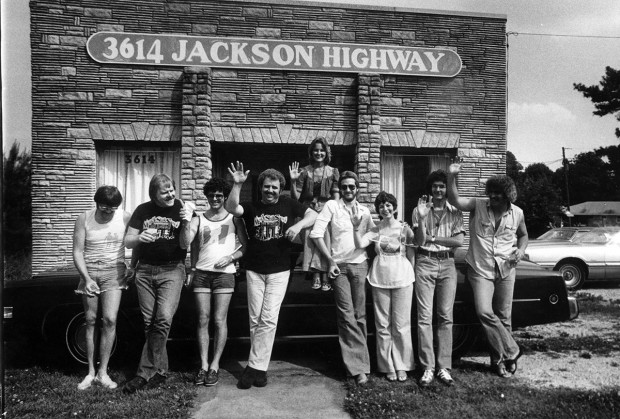
You mentioned working with Traffic and going out to play with them. Did you ever tour with other artists or did you mainly stay in the studio?
That was really the only time; we had people that would ask us but we were so busy in the studio that we were booked up months ahead with sessions. We owned our own studio and had to keep our staff working; we had secretaries and engineers, so for us to leave would be a big deal. The only way for us to go with Traffic was because they rented our studio, paid our people, and paid us what we would make playing sessions. It turned out that wasn’t enough but that’s how we went the first time. The second time we were a bit smarter and made a little more money; we found out that they could pay for us with what they made in one night. We did three tours with Traffic—two American and one European, but that was it. Other than that, our life was in the studio.
What are some of your favorite instruments to use in the studio? Does it change based upon the session?
My first bass was a ’61 Fender Jazz. It took a long time, but I eventually got a really good sound with it. I worked with that bass for over 10 years so I knew how to make it sound right and I measured all other basses against that one. That bass got stolen on one of the Traffic tours in ’73 so I immediately went out and got two other Jazz basses. Then I got an Alembic and was able to get a really good sound with that one. People would come in to the studio and say, “Gosh, I thought you played a Fender. What’s that thing?” But it got a great sound, and as always, I was playing and working for the sound that came out of the speakers. I’ve gotten a good sound with a Kubicki X-Factor bass and then I’ve got some Lakland basses that I really like… one of them is a Joe Osborn model. It’s the closest thing to my first jazz bass; it’s got the stacked tone controls and the neck feels like the neck that was on that Jazz. It has the sound I want and it plays well for my hands.
Do you have any other advice for folks that want to become studio players?
You have to be willing to try anything, even if it’s music you don’t really care for. You need to put that out of your head and do the best at whatever it is. That’s why we were able to record so many different types of music, because we were open-minded. We weren’t strictly country players, rhythm and blues players, or rock players, but we were willing to try anything and make believers out of the people we were trying to make believers out of, be it the artist, the producer, or the record buyers. We also played for the playback speakers… the drummer tuned his drums for the sound of the studio and would make adjustments if it didn’t sound right. It was the same with me and the guitar players; we’d hear a playback and then go back and figure out what it needed.
My rules have always been: be on time, be in tune, and be ready to work. Have your mind open to whatever they want you to play and do your best version of that.
Ryan Madora is a professional bass player, author, and educator living in Nashville, TN. In addition to touring and session work, she teaches private lessons and masterclasses to students of all levels. Visit her website to learn more!

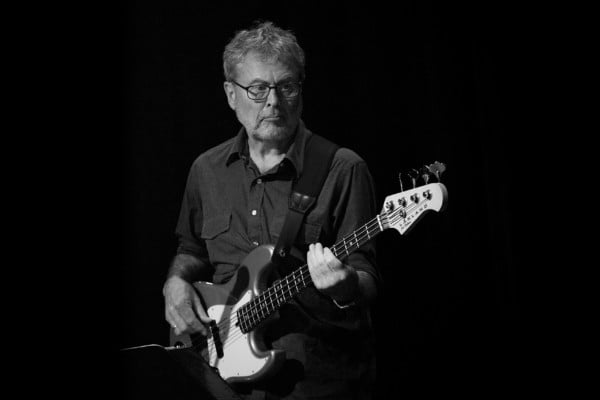
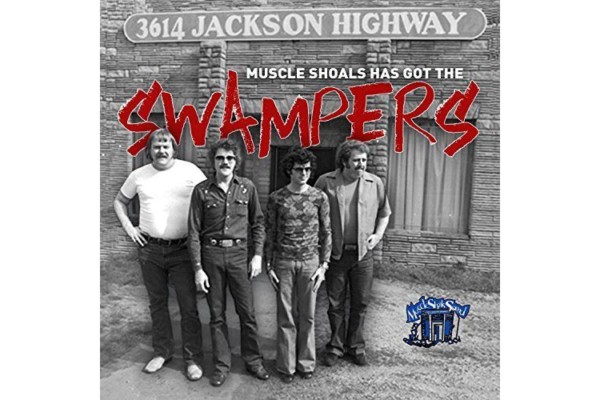
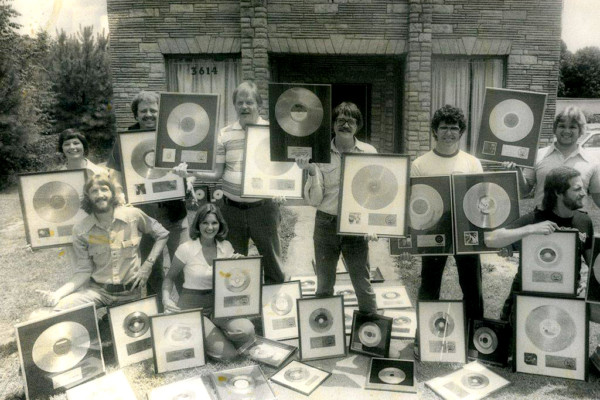
OMG!!! Fantastic column, Ryan. I hope I have the good fortune to meet Mr. Hood someday. What an inspiration.
Great story!
Kudos to David Hood for his excellent body of work and his stealth musicianship.
I’m definitely watching the Muscle Shoals documentary ASAP!
What talent in my hometown!
N1, Ryan. Tnx!
Be well and thanks for the songs.. <3
I tracked down the original Jamaican track that inspired I’ll Take You There https://www.youtube.com/watch?v=SdAcG24iI_w
Thank you again for yet another inspirational piece!
Great interview, Ryan! David is truly one of the greats! He is a major influence of mine.
I’d love to know what amp he was using at FAME and Muscle Shoals Studios
Fender Bassman the tan 2 x 12″ model probably a mid 60’s. It’s still at the Muscle Shoals Sound studio.
David has worked on countless recordings. His depth really shows on album cuts that weren’t hits, that are obscure yet so killer. Can’t say enough about David Hood. His first paid session included “When A Man Loves A Woman”?? A groove and pocket that is un-matched.